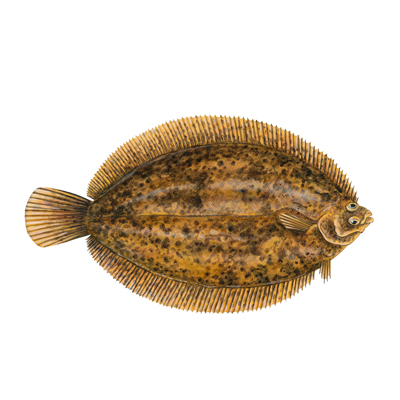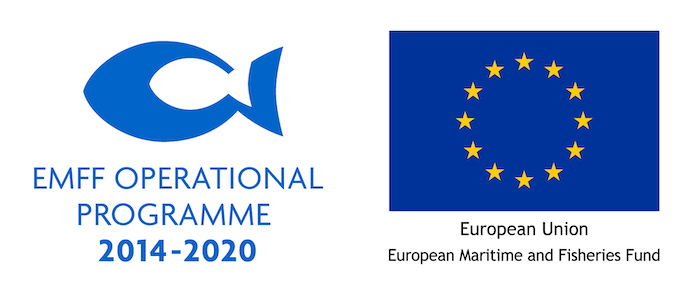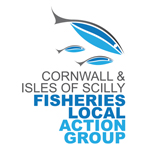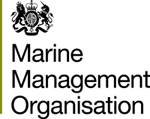

A highly prized flat fish with a distinctive delicate flavour and white meat.
Little is known about lemon sole stocks in our area and there are no restrictions on the amount of lemon sole being caught so it is at risk of over fishing. There are many alternative species that are more sustainable. In the Eastern English channel the latest research shows that stocks there are healthy and fishing is at sustainable levels but no studies have been carried out in Cornish waters. Until there is better scientific study of this stock it is very hard to give a great sustainability rating.
385 tonnes of lemon sole were landed to Cornish ports In 2021, with a value of £1.35 million (MMO data). The majority are caught by beam trawling.
Updated July 2023
Cornish boats landing to Cornish Ports
Demersal trawls are large nets that are pulled through the water with the bottom edge of the net touching the seabed. At each edge the net is pulled open by metal ‘trawl doors’. Sometimes referred to as Otter trawling.
Learn moreCornish boats landing to Cornish ports
Beam trawls are nets attached to a steel beam that holds the net open. The belly of the net is made of chains and the upper surface of the net is mesh. Beam trawlers pull two nets along the seabed simultaneously.
Learn moreCornwall Good Seafood Guide rates fish on sustainability using a scale of 1 to 5.
1, 2 and 3 are recommended, Fish to avoid are rated 5.
We use the system devised by the Marine Conservation Society (MCS) so our scores are comparable with the scores produced by MCS for the UK and fisheries from all around the world. For more information on scoring click here.
A small flat fish with a tiny head and mouth that lives on stony and gravelly seabeds, from depths of 20m to 200m. Feeds on worms, shrimps and other small animals. Grows to a maximum size of 60cm, matures at 4-5 years, can live for up to 17 years. Minimum landing size for this species in Cornwall is 25cm. Spawns in spring time. .
Little is known about lemon sole stocks in our area. In an annual beam trawl survey carried out in October by CEFAS abundance was high in the early 1990’s but since then decreased and has been fluctuating. According to Project inshore the stock is likely to be overfished and there is no evidence of rebuilding. Catches to Cornish ports have been fairly constant at around 400 tonnes per year landed to Cornwall but increased in 2012 and 2013 to over 600 tonnes. SE Ecological risk assessment (SEAFISH 2014) said that the risk to Lemon sole stocks is significant (3/5). In 2020 there was a downturn in landings due to the Covid lockdown and landings have increased again in 2021.
Lemon sole are caught by Beam trawls and otter trawls. Trawls are dragged along the seabed disturbing the sand and sediment scooping up target species. In The South west beam trawling and demersal trawling results in capture of a mixture of species and it is difficult to accurately target on specific species without others being caught. The fishing gear used has an impact on seabed habitats particularly when used for the first time in an area although improvements have been made including use of larger mesh size, square mesh panels and large mesh top sheets in beam trawls all improve selectivity of the nets and allow more unwanted or juvenile fish to escape.






Cornwall Good Seafood Guide is underpinned by the Marine Conservation Society (MCS) Good Fish Guide. The first UK consumer guide to sustainable seafood. For more information visit www.fishonline.org
Cornwall Good Seafood Guide is here to help us all make sustainable seafood choices. Choices that will help us keep the oceans healthy and Cornish fishers' futures safe. This website is funded by Cornwall Wildlife Trust. If you would like to make a meaningful difference to the health of our oceans, please consider making a donation to the Cornwall Wildlife Trust Ocean Emergency fund. Your donation will help safeguard these remarkable environments, ensuring that they continue to thrive for generations to come. Together, we can be stewards of the seas and champions for a healthier, more sustainable future.